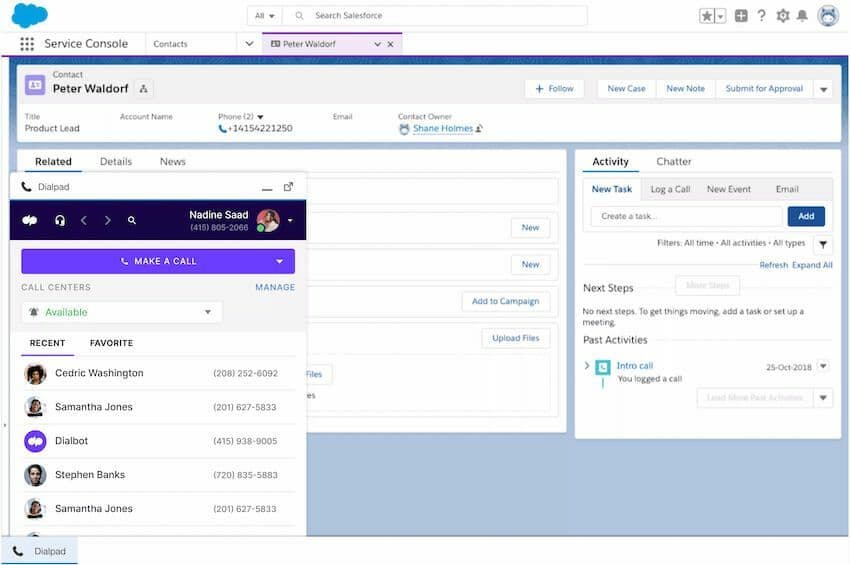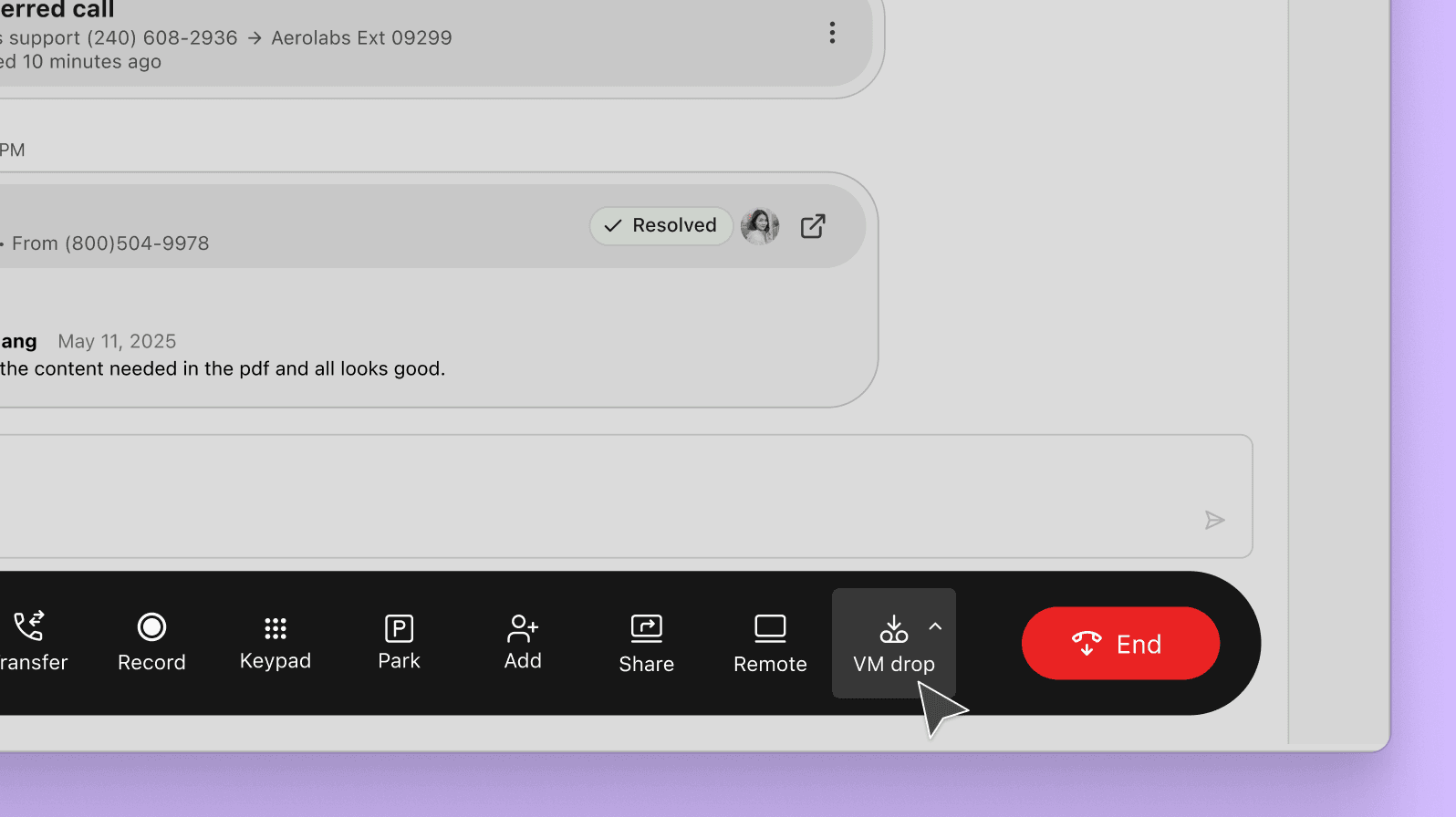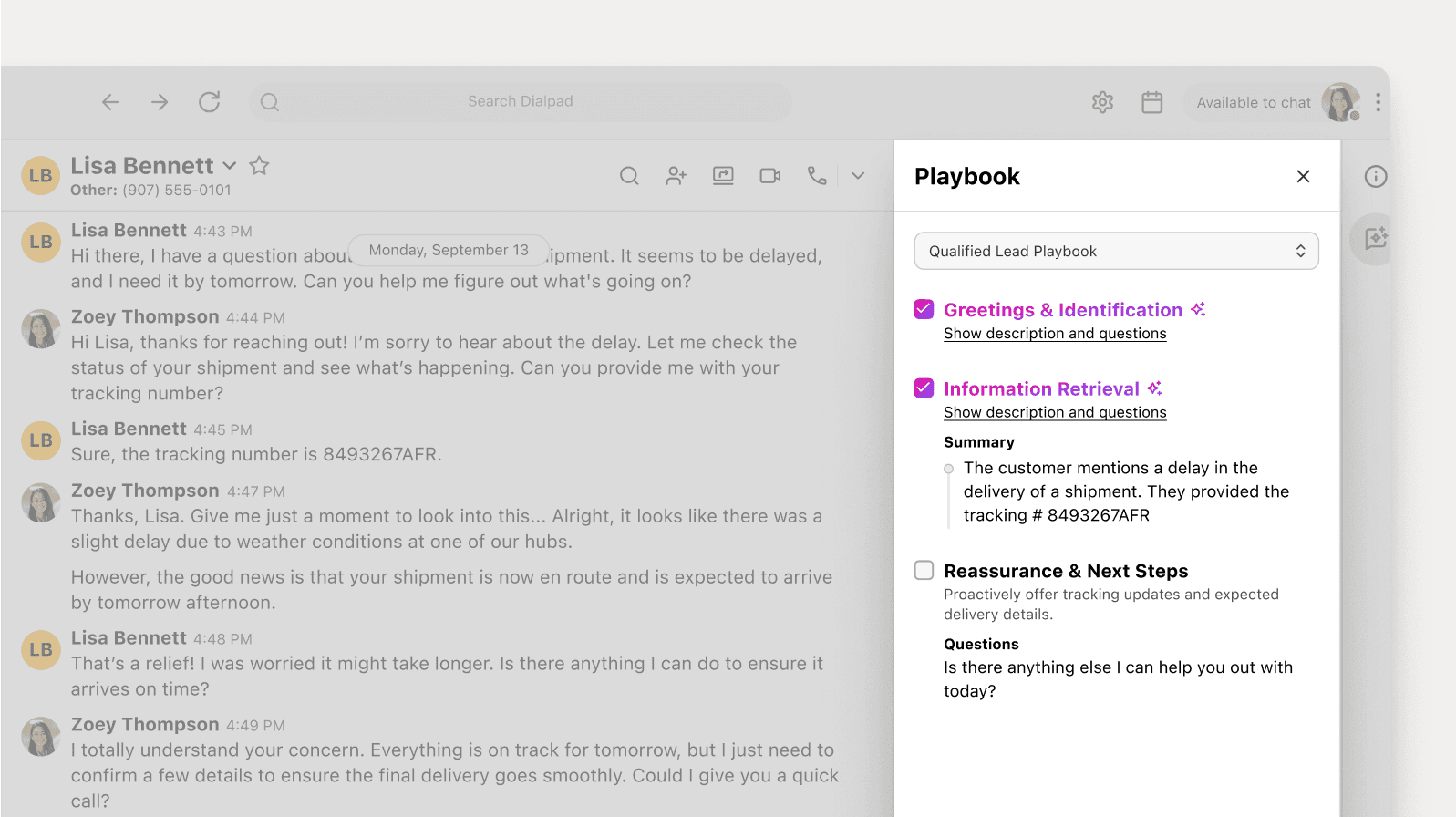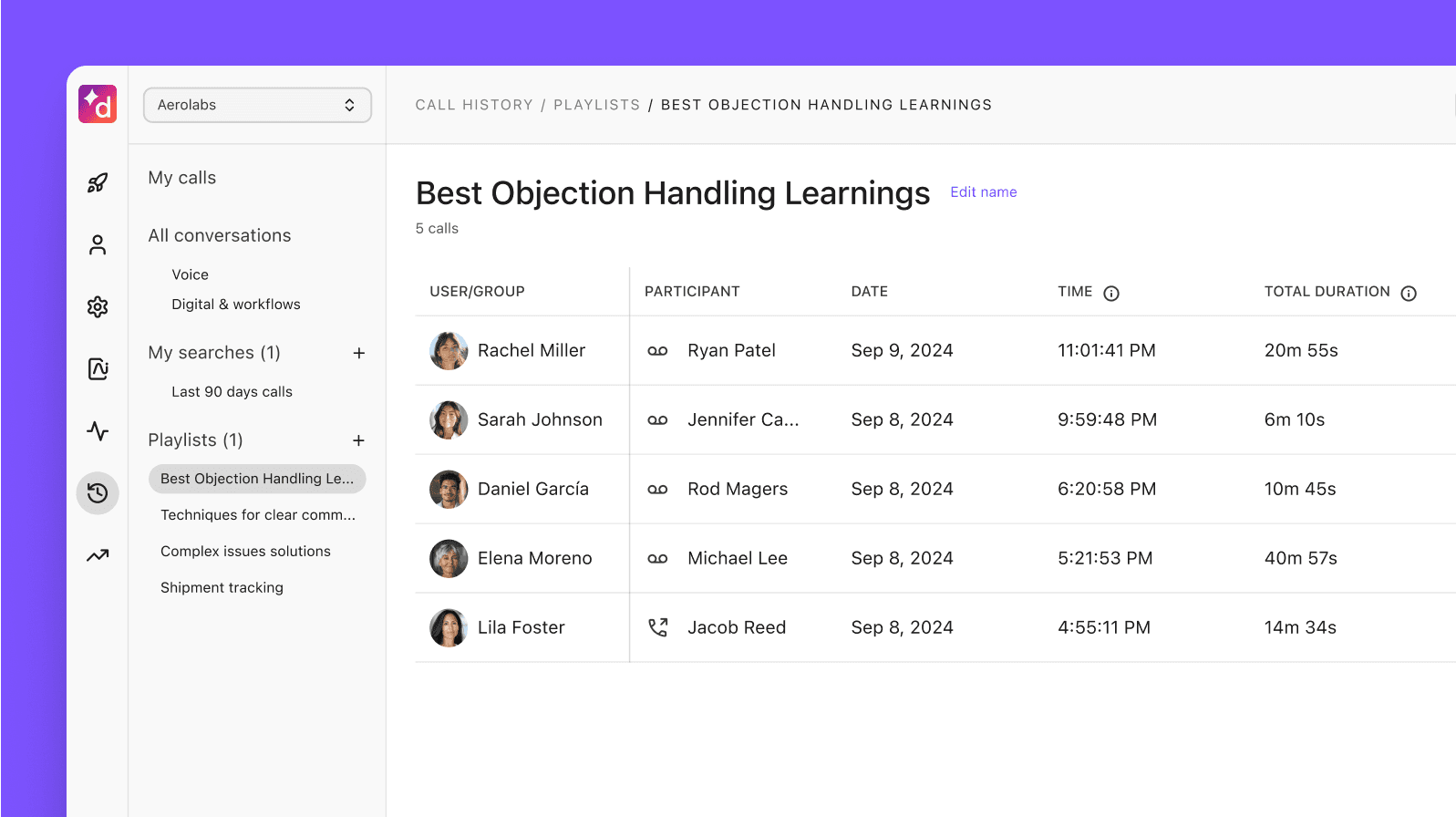How to build a sales playbook that works (with free template)

Senior Manager of Sales Development

Tags
Share
Sales playbooks are an essential tool for prospecting and accelerating deals, yet many enterprise organizations still don’t use them because they don’t fully understand the value they can bring.
As a sales leader with over 15 years of helping businesses grow their sales operations, I’ve created and used a ton of different sales playbooks—and understand the challenges of putting one together.
If your organization is looking to create a sales playbook, this guide will provide you with everything you need to know. We'll cover why your team should be using a playbook, and how to create one that will help your team meet and even exceed their quotas.
Why are sales playbooks valuable?
Sales playbooks can be powerful tools in boosting your sales team’s performance numbers and your company’s bottom line. Here’s how they can help:
They accelerate training and onboarding
Industry wisdom states that it can take an average of three months for a new hire to work up to talking to customers, nine months for them to be competent enough to perform, and up to 15 months until they are a top performer.
A sales playbook can help greatly accelerate this ramp up time, as the new reps will have everything they need in the document as a reference when they begin working on tasks. This includes product value proposition, team and company goals, objection handling tips, and your sales methodology.
The playbook can help get them started with pre-written call scripts and sales plays that they can modify as they grow in experience.
They shorten sales cycles
There are many different ways a sales playbook can help maintain deal momentum:
Supply SDRs with effective questions and talking points for faster lead qualification
Establish repeatable procedures and areas of responsibility to reduce delays
List available resources and subject matter experts (so that sales doesn’t have to waste time looking)
Provide pre-written email templates and call scripts so sales doesn’t have to write their own
They lead to better prospecting
A good sales playbook will include information on:
Ideal Customer Profile (ICP)
Where and how to find prospects that match ICP
How to approach those prospects effectively
Sales conversation tips for faster qualification
All this will help your team focus their efforts on the right leads, and therefore drive more closed deals.
Playbooks increase call success rate
The best sales playbooks are living documents that are constantly tweaked and expanded—this includes the scripts and tips that each contain. By keeping what works and removing what doesn’t, call success rates will increase as your agents get better scripts.
A properly-maintained sales playbook can:
Ensure your rep consistently hits all the key points during a call
Help differentiate between customer needs and customer wants
Recommend ideal responses to common objections
Expose current strengths and weaknesses of competitors
Present call strategies for before, during, and after a meeting
All of this can help your team handle sales calls with confidence and increase their chances of successfully moving the ball forward.
👉 Get your FREE sales playbook template
Grab this downloadable template and get a head start on your own playbook. It includes a pre-designed layout and instructions on how to best use each slide.
What should you include in a sales playbook?
The specific contents of each playbook will vary depending on who the playbook is for and what its goals are. Generally speaking, however, most playbooks will contain one or more of the following:
Company overview
New sales staff won’t be as dialed in with the company and what it’s all about, so including a company overview in each playbook will be a good way of ensuring that they know what the company is and what it stands for. You can include things like:
A brief company history. Focus on the major milestones of your company’s growth. Try to highlight things that would be good conversation pieces for when agents talk to prospects, like how many awards your organization has or your long pedigree in the industry (if applicable).
Mission and vision. Believe it or not, employees do pay attention to this, and they do check to see if the company lives up to the standards it sets for itself.
Product overview
Your agents should be getting intensive product training as part of their onboarding process (after all, how can you sell something you know nothing about?), but they will occasionally need a refresher or may need background info on an unfamiliar product line.
Include all the important details of the product in this section, such as:
Product features and capabilities
Key benefits for target customers
Pricing information and strategies
To give your reps the best possible chance of making a deal, you should include an honest assessment of potential product weaknesses and suggest ways to talk about those weaknesses during a negotiation.
Operational procedures
Calling prospects isn’t the only thing reps will be doing. They will have to perform operational tasks that keep the team organized and coordinated.
An example of this would be instructions on setting up and updating Salesforce. While much of this would be covered in on-the-job training, you can set important reminders like when and how to use specific tags or segments.
You can also mention helpful features, automations, or shortcuts that can save reps time and effort. For instance, Dialpad has a Salesforceclick-to-call integration that allows you to initiate a call straight from your CRM—no need to switch apps:

If you’re using Dialpad’s Real Time Assistance (RTA) cards or Ai Live Coach, you can mention them here so that reps know that they will occasionally get pop-ups with tips on tricky topics.
Another example of an operational procedure: We have a team of SDRs that focus on high-volume outreach and to help them get more at-bats, we use Dialpad’s voicemail drop feature. It lets them pre-record a message and “drop” it into the call instead of having to recite the same message every time:

This is a simple operational improvement that can save your reps a ton of time, and by including these kinds of procedures in the playbook (with screenshots and links to helpful resources), you can make newer reps more self-sufficient. They won’t have to wait for their manager or co-worker to provide assistance, and it keeps your sales data clean and up to date.
Details of your sales process
An enterprise sales process is anything but straightforward. There are a number of rules, procedures, policies, and contingencies to account for, not to mention subject matter experts to consult and databases to update.
For example, your sales playbook could highlight the different roles and goals that different types of sales reps in your own org might have. Our own playbook includes a matrix that details which task an SDR should be responsible for (Calendar invites and emailing prospects), which require an AE to be consulted (rescheduling meetings), and which should be handed off to an AE (discovery calls).
A playbook is the ideal place to document all of those procedures so that sales team members will have a reference to turn to if they want to confirm next steps.
And Dialpad's Ai Playbooks feature helps our coaches and supervisors track rep adherence to sales methodologies like BANT, SPIN, and SPICED more easily. Dialpad Ai can automatically suggest questions and phrases that they need to say during a call (for example, asking about budget or purchase timelines), understand whether the behavior was met, and check the task off the list (or notify managers if this isn't being done):

This is helpful for sales leaders, because they don't have to painstakingly review every single call, and can quickly tell which reps need additional coaching or if any parts of the methodology can be improved upon—all thanks to this unique sales AI feature:
Buyer personas
It’s always a good idea to include buyer personas in a sales playbook, but be mindful of the context in which they’re being used.
For instance, if you’re building a playbook to help SDRs sell a contact center solution (like Dialpad), then it makes sense to include buyer personas that have a vested interest in contact centers. It would not be a good idea to include buyer personas for other products, even if the organization sells them, too.
KPIs and goals
Any good sales leader understands the value of having well-defined sales goals and measurable metrics and KPIs.
It’s a good practice to include these numbers in your sales playbook as a way to make these success criteria visible and transparent for the entire team—not just the newbies. If you have different sales targets for different markets or products, then you can include those in the relevant playbook so that it’s always clear to the sales rep what they are trying to achieve with a specific sales motion.
Lead qualification criteria
Not all that glitters is gold, and not all people that your sales team encounters will be qualified leads. But how will an eager sales rep be able to immediately sort the wheat from the chaff? By making the information easily accessible in the sales playbook.
As mentioned before, try to only include lead qualification criteria that are relevant to the products/market being covered in that specific sales playbook. Include desirable job titles, like VPs or CROs, or technical background. Reps can normally find these out on sites like LinkedIn.
Sales enablement resources
Even the thickest playbook won’t be able to contain all the sales enablement resources a rep might need, but it can tell reps where to find them.
When making a sales playbook, be sure to include a “resources” section that contains a list of valuable content a rep might need to push the deal forward. These can include whitepapers, ebooks, case studies, use cases, topical blogs, and data sheets.
Dialpad also allows you to create a “coaching calls playlist” of notable call recordings for each individual sales rep, so that they can observe and learn on their own time:

If possible, include a brief intro to each resource so that reps know how to best employ them.
How to create a sales playbook that works
Writing an effective sales playbook may seem like a daunting task, but it’s definitely achievable if you approach it systematically. Here are the best practices that we would recommend following as you build it out:
1. Lay out your sales process
Even the fanciest sales playbook will be useless if you don’t have a solid sales process in place. If you already have one documented, then your job just became a lot easier. All you’re doing is copying that knowledge from one document into another.
If you don’t have it codified yet, then this is a golden opportunity to do so. Map your sales process out from start to finish. Identify and plug any gaps and make sure that the sales playbook covers all the necessary steps.
2. Make your sales playbook goals-specific
It’s not enough to simply write down procedures for closing a sale and call it a day. That’s surface-level thinking, and an enterprise sales organization has to work with more intent.
Every sales motion should be done with an eye towards achieving a goal, whether it’s tactical or strategic. Determine what the overall goals of the organization are and set the playbook’s goals to match.
👉 Dialpad tip:
Make sure the goals you include in your playbook are both measurable and achievable. Measurable goals will be easier to track and prove that your team is effective, while achievable goals help keep teams motivated.
3. Identify who should be involved in the sales playbook creation process
Playbooks have a tremendous potential impact on a sales org, and so should never be created by just one person.
Identify which people on your team have a deep knowledge of your customers and their buying habits, your sales process, and your overall company goals. Find salespeople at the sharp end of the stick who can provide honest feedback on what works and what doesn’t.
Once you’ve identified these individuals, leverage their knowledge and expertise in both crafting the document and editing the final product. Be open-minded when asking for their input and respect their judgment (that’s why you approached them, after all).
4. Verify your buyer persona
Before committing your ICP to paper, double-check that these profiles are still relevant. Markets have a tendency to shift, after all (and so do buyer habits).
Reassess your current customer base and see if your best buyers are still the ones represented in your buyer persona. Are their pain points the same? What about their goals? Do they still care about the same things?
This may take a while to do, but it will pay off in the long run when your sales reps start chasing the updated personas in the playbook.
5. Inspect (and update) your sales enablement materials
Your marketing team is an oft-untapped resource, and can make valuable content that will address customer concerns and cement your company’s place at the top of mind. Go through their list of available content and add the most relevant to your playbook. If there are any that need updating or need to be built up from scratch, then go ahead and make the request.
6. Monitor playbook performance
Sales playbooks are rarely set-and-forget documents. These will be your primary tools for training and managing sales staff, so you have to follow up with the team and make sure that the information and the plays in these playbooks actually work.
As your sales managers and sales reps run with this playbook, collect both qualitative and quantitative results to see how well the playbook is performing. Maybe the targets are too aggressive, or not enough. Maybe the workflow needs to be tweaked, or the competitive information is inaccurate. It could be that the buyer’s journey has changed or that new products now have to be included in your elevator pitch.
Conduct these reviews on a regular basis to ensure that the playbooks stay relevant and have a positive impact on your team.
Help your reps close more deals with a good sales playbook
Sales playbooks can have a tremendous impact on your organization’s bottom line. By having a sales playbook, you will be able to increase the number of sales, make the sales process more efficient, help new salespeople ramp up more quickly, achieve higher close rates, improve customer satisfaction, increase the average deal size, and reduce the sales cycle.
Power up your sales team
You're giving your team a playbook—now give them an effective sales enablement platform. Book a demo of Dialpad's AI-powered sales engagement platform, or take a self-guided interactive tour of the app first!
